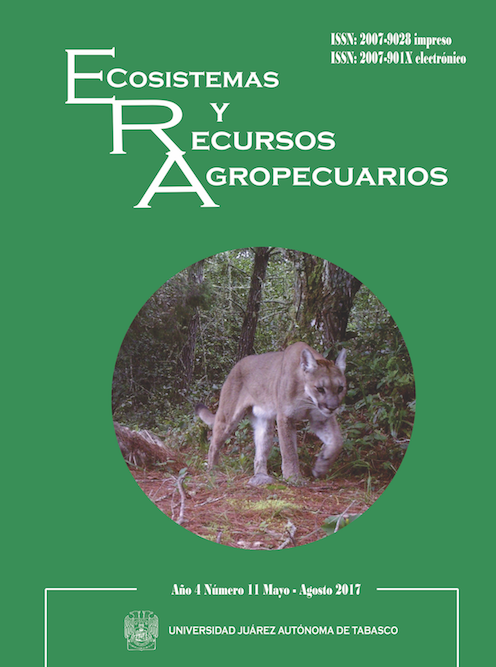Effect of tanniferous plants on in vitro digestion and methane production
DOI:
https://doi.org/10.19136/era.a4n11.1160Keywords:
Plant phenolics, Tannins, In vitro gas production, Methane emission.Abstract
It has been shown that tannins in the foliage of trees and shrubs can reduce methane (CH4) production in the rumen. The aim of the present paper was to evaluate the potential of ve tanniferous browse plant species, native to temperate central Mexico, to reduce in vitro methane production. The in vitro gas production technique and gas chromatography were used to evaluate the e ect of the inclusion of these plants at three inclusion levels (10, 20 and 30 %) in an experimental diet. A factorial experimental arrangement with the ve plant species and four levels of inclusion was used. Gas production was monitored throughout 72 h of incubation and methane production was recorded after 24 h. The results showed that a signi cant decrease in methane production was observed with all plants at 10 % inclusion level (p < 0.001), and that the highest reduction (> 26 %) was observed with Amaranthus spinosus and Commelina coelestis at 20 % and 30 % inclusion respectively in comparison to the control diet. However, the digestibility of the experimental diet declined at these inclusion levels. It was concluded that all the tested plants reduced methane production at all inclusion levels; however, the best tradeo between methane reduction and tannins' associated negative e ects on diet digestibility was achieved at the 10 % inclusion level.
Downloads
Published
Issue
Section
License
Aviso de copyright
Los autores que se envían a esta revista aceptan los siguientes términos:
una. Los autores conservan los derechos de autor y garantizan a la revista el derecho a ser la primera publicación del trabajo con una licencia de atribución de Creative Commons que permite a otros compartir el trabajo con un reconocimiento de la autoría del trabajo y la publicación inicial en esta revista.
B. Los autores pueden establecer acuerdos complementarios separados para la distribución no exclusiva de la versión del trabajo publicado en la revista (por ejemplo, en un repositorio institucional o publicarlo en un libro), con un reconocimiento de su publicación inicial en esta revista.
C. Se permite y se anima a los autores a difundir su trabajo electrónicamente (por ejemplo, en repositorios institucionales o en su propio sitio web) antes y durante el proceso de envío, ya que puede conducir a intercambios productivos, así como a una cita más temprana y más extensa del trabajo publicado. (Consulte El efecto del acceso abierto).


